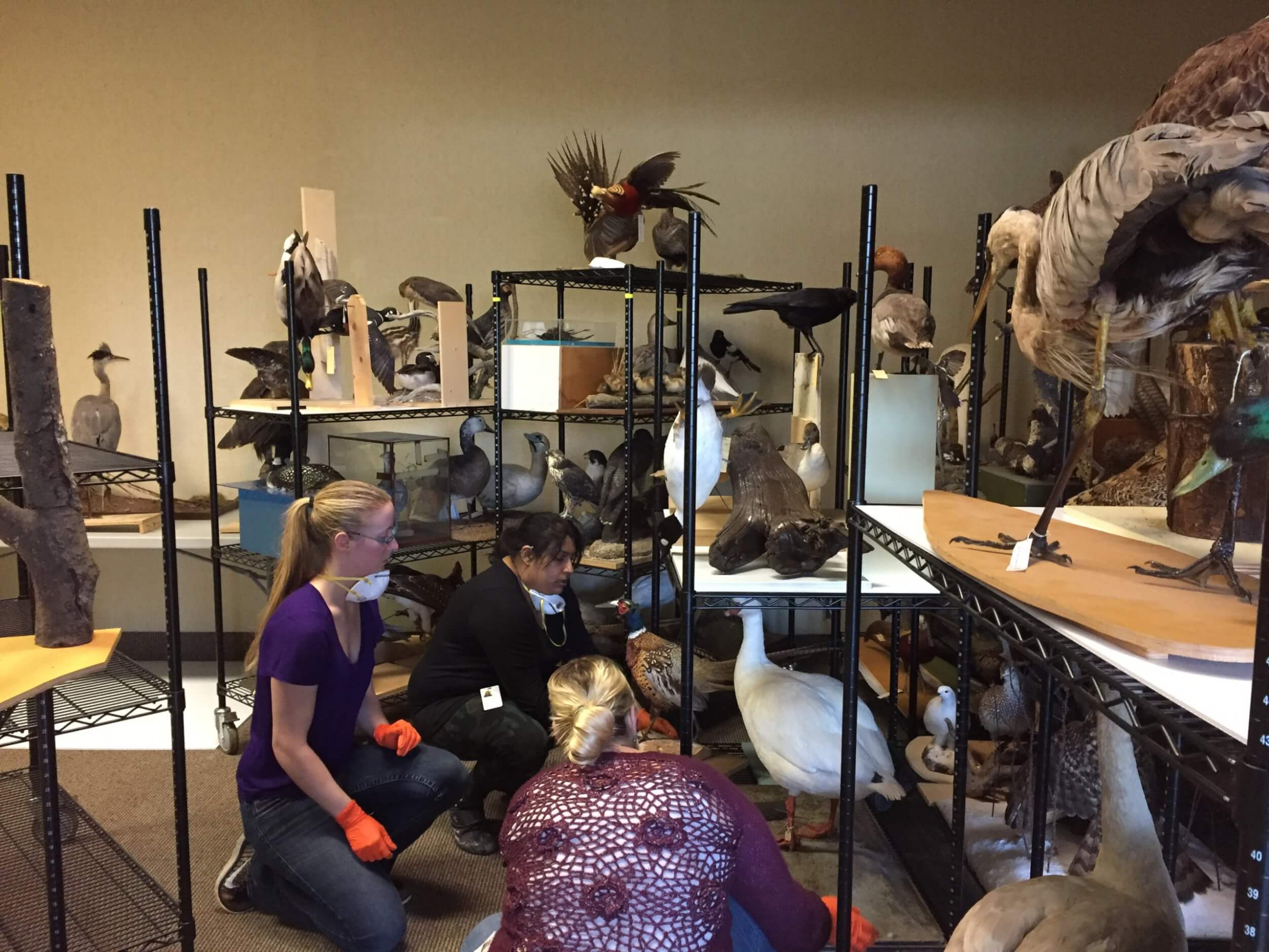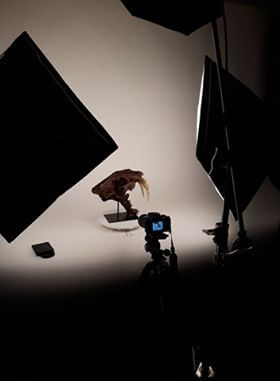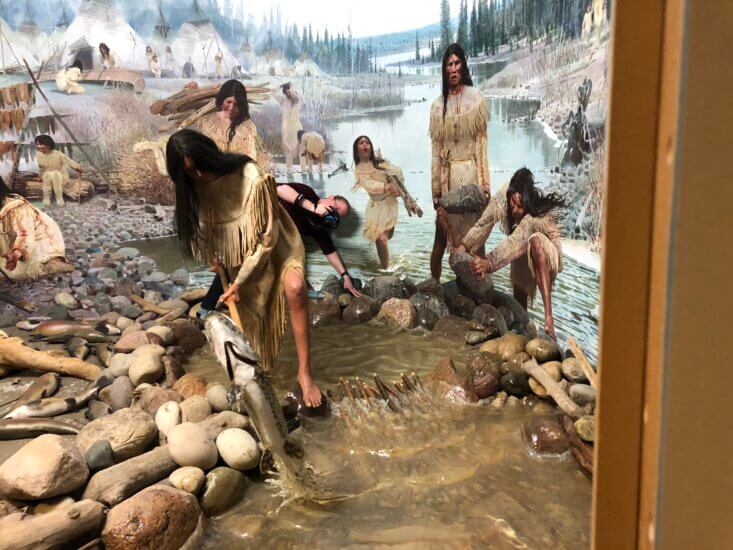Little did Brittany McCartney know when she started her graduate diploma in Heritage Resources Management from Athabasca University (AU) that her practicum project on 3D modelling would become a major focus for the Royal Alberta Museum (RAM) when they temporarily shut down due to COVID-19.
During her Master of Information Studies at McGill University, McCartney started volunteering at the RAM, which piqued her interest in museum studies. After graduating and seeing a job posting for a collections management assistant, McCartney jumped at the chance to work at the RAM. As part of her work as a collections management assistant, McCartney is an intern within the Historical Resources Intern Program (HRIP), an innovative work study partnership between AU and the Government of Alberta.
Her role is to ensure that the collections database is up to date and as accurate as possible for millions of objects-which was particularly important during the museum's move over the past several years. She will never forget seeing the excitement on guests' faces as they walked into the new museum for the first time in 2018.

"Being an HRIP intern has given me firsthand experience of the exhaustive work that has gone into moving a collection, preparing exhibit galleries, and opening a new museum," she said of her experience with the program.
As part of the internship program, McCartney is working on finishing her graduate diploma in Heritage Resources Management. Her work has greatly benefitted from the breadth of knowledge provided by the courses. The opportunity to discuss important issues in heritage and connect with students working in different sectors of the field offered contextual insight into the importance of heritage work and highlighted the interdisciplinary nature of the work. Although an array of essential topics are covered, from collections, conservation and interpretive programming to ethics and policies, issues of accessibility were a constant theme that informed the direction she wanted to take her practicum project.

Several ideas for her practicum began in Issues in Heritage Resources Management (HERM 501) with an assignment to analyze a virtual exhibit. Seeing the variety of amazing ways in which digitization and virtual access are being used to bring heritage to a broader audience inspired her while the in-residence portion of Documentation and Condition Assessment (HERM 671) helped to narrow her focus to 3D documentation and interpretation and gave her the skills and confidence required to bring photogrammetry to the RAM.
McCartney was able to take what she learned in the course and directly apply it to her practicum work, such as learning how tape is necessary in stabilizing a camera lens so it doesn't shift during a photography session or how to apply 3D modelling to conservation work.
"For example, one of the models I've done is a mammoth tooth that is regularly used for school groups as an object they can touch and handle. It's important to capture how it might change over time-deterioration, colour change and things like that. The curator wanted me to make a 3D model so that we have records of it in 3D which we can use to compare to the object in the future."
This helped in finalizing what McCartney's practicum project would focus on-creating 3D models for the RAM-and moving them online to increase accessibility. When she started the project, this was something the RAM wasn't equipped with so after researching what was needed, McCartney set out to catalogue some of the museum's smaller objects. Or at least that was the plan.
"We threw ourselves into the deep end with two life-sized dioramas at the old museum. They were being dismantled, so it was decided that they should be digitized beforehand," said McCartney.

As of right now, they've done the two dioramas such as the Fletcher site diorama, and smaller objects, such as a mammoth tooth and the Blue Dress. But, because of the current pandemic, there has been a push to make more of the museum's collection available online. McCartney had originally planned to do five to ten models by the end of her practicum, but now the team she works with has already completed ten and aims to complete a new one every week.
"If I accomplish anything in my time as a student, it will be that these 3D models, hopefully, can provide some of the excitement that I saw on those faces on our opening day to those who might not have access to the physical museum either because of the pandemic or otherwise," said McCartney.